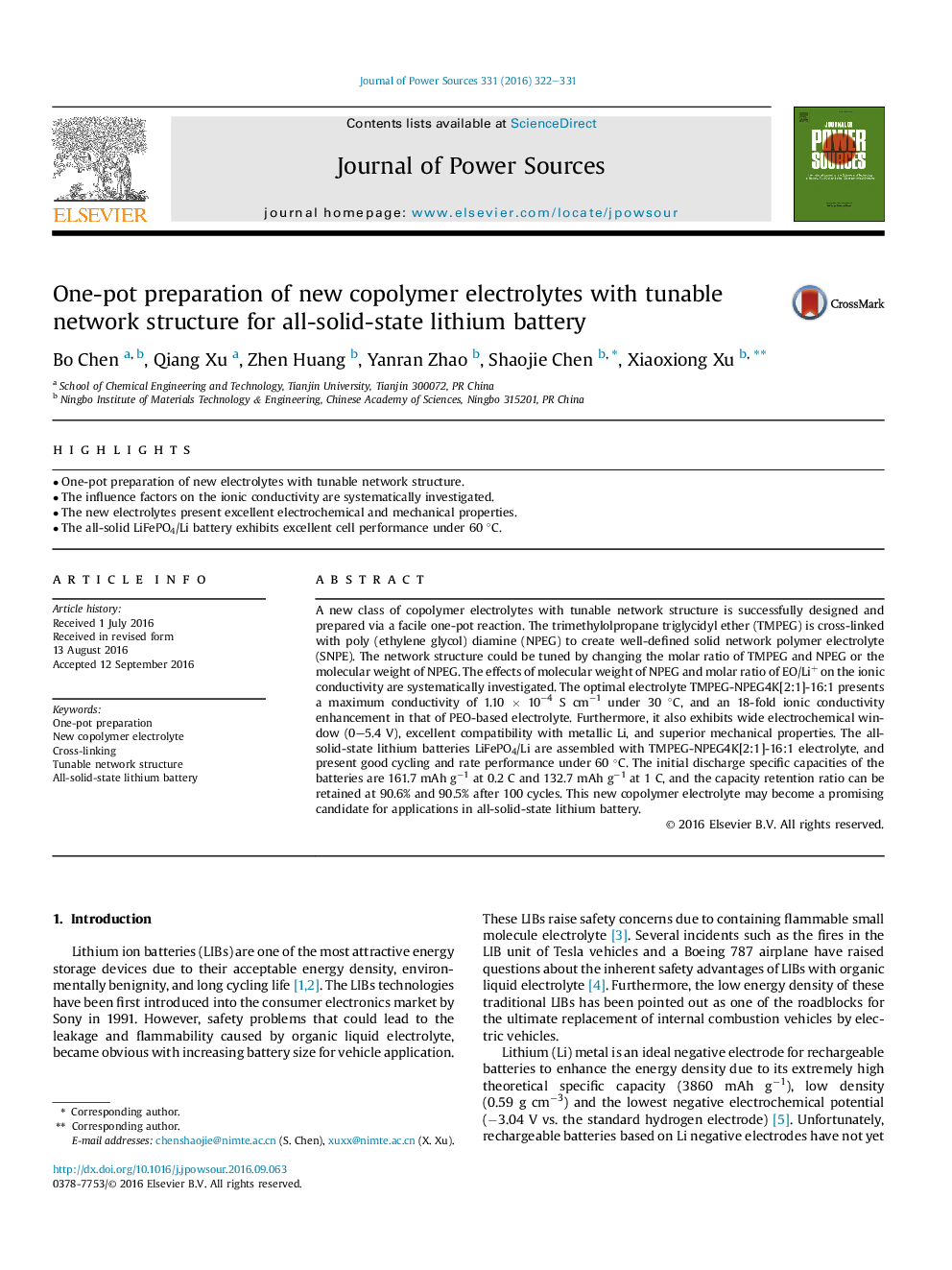| Article ID | Journal | Published Year | Pages | File Type |
|---|---|---|---|---|
| 5150186 | Journal of Power Sources | 2016 | 10 Pages |
Abstract
A new class of copolymer electrolytes with tunable network structure is successfully designed and prepared via a facile one-pot reaction. The trimethylolpropane triglycidyl ether (TMPEG) is cross-linked with poly (ethylene glycol) diamine (NPEG) to create well-defined solid network polymer electrolyte (SNPE). The network structure could be tuned by changing the molar ratio of TMPEG and NPEG or the molecular weight of NPEG. The effects of molecular weight of NPEG and molar ratio of EO/Li+ on the ionic conductivity are systematically investigated. The optimal electrolyte TMPEG-NPEG4K[2:1]-16:1 presents a maximum conductivity of 1.10 Ã 10â4 S cmâ1 under 30 °C, and an 18-fold ionic conductivity enhancement in that of PEO-based electrolyte. Furthermore, it also exhibits wide electrochemical window (0-5.4 V), excellent compatibility with metallic Li, and superior mechanical properties. The all-solid-state lithium batteries LiFePO4/Li are assembled with TMPEG-NPEG4K[2:1]-16:1 electrolyte, and present good cycling and rate performance under 60 °C. The initial discharge specific capacities of the batteries are 161.7 mAh gâ1 at 0.2 C and 132.7 mAh gâ1 at 1 C, and the capacity retention ratio can be retained at 90.6% and 90.5% after 100 cycles. This new copolymer electrolyte may become a promising candidate for applications in all-solid-state lithium battery.
Related Topics
Physical Sciences and Engineering
Chemistry
Electrochemistry
Authors
Bo Chen, Qiang Xu, Zhen Huang, Yanran Zhao, Shaojie Chen, Xiaoxiong Xu,
